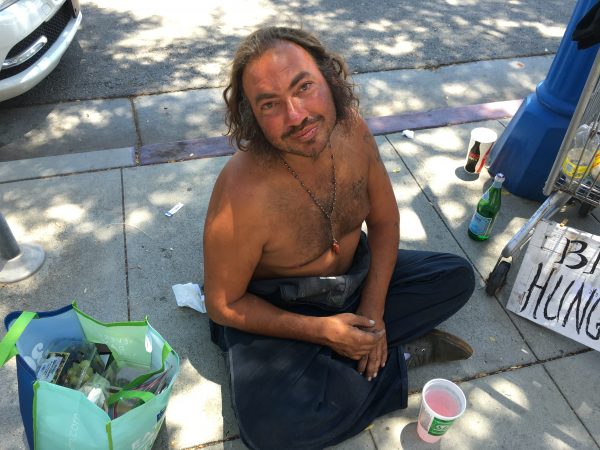In the 1980s, a group of London lesbians and gays banned together to help a small Welsh mining village during the UK Miners’ Strike. The queer activist group realized that British miners and the LGBTQ community faced similar persecution under the Margaret Thatcher administration. Though the mining cause proved unsuccessful, the LBGTQ community made an invaluable ally in the National Union of Mineworkers (NUM). In 1985, the NUM proved key in securing gay rights on a major political party’s platform. The remarkable story of Lesbians and Gays Support the Miners (LGSM) is depicted in the 2014 Golden Globe-nominated film “Pride.”
Following in the footsteps of LGSM, the City of West Hollywood should do more to stand in solidarity with L.A.’s homeless population. For a city that has constructed a narrative around welcoming streets for the LGBTQ community, West Hollywood quietly turns a blind eye on its homeless — a group that should not be distanced from the gay community.

Gays are intrinsically tied to the homeless. Thousands of homeless people in Los Angeles are young LGBTQ people who have been abandoned by their families and forced to live on the streets. A disproportionate amount of homeless youth in Los Angeles identify as LGBTQ. For West Hollywood to reject the homeless is to reject these members of the gay community.
Through subtle ways, West Hollywood enables an attitude that frowns upon the homeless. The gates of parks close promptly each night, deterring homeless dwellers from occupying these public spaces to sleep. Security guards monitor grocery store parking lots, preventing panhandlers from disrupting West Hollywood clientele. Business-minded street construction pushes the homeless further down Santa Monica Boulevard. By doing so, West Hollywood passes the homeless onto neighboring cities, leaving others to deal with what should be a regional effort.
In defense of West Hollywood, in recent years, the city has adopted policies to better serve the homeless. In response to West Hollywood’s homeless population doubling in 2016, the city began a program to provide more outreach and services. For a few hours each weekday, West Hollywood Library hosts local nonprofit organizations, such as the Los Angeles LGBT Center, to provide on-site services to the homeless. The city also offers housing vouchers to subsidize rent for those on the verge of losing their homes.
But West Hollywood needs to go above and beyond in order to better fight for the homeless population. In the way that West Hollywood combats hostility towards the gay community, the city should actively work to change the mentality around the homeless. A splash creates a wave.
The City of Albuquerque, New Mexico, has gained national attention for “There’s a Better Way,” an inventive homeless outreach program. After encountering a panhandler with a sign asking for work, Albuquerque Mayor Richard J. Berry initiated the program that brings work to the homeless. Each day, a recruiter drives around Albuquerque offering homeless people $9 an hour to pick up city litter that same day. At the end of a hard day’s work, the city connects them with its nonprofit partner, which provides emergency shelter and other services. Not only does Albuquerque benefit from city beautification, but also the program humanizes the homeless and effects change through the dignity of work.
Back in the 1980s, when a British tabloid newspaper called LGSM “perverts” for bailing out miners repeatedly targeted by the police, the group decided to throw a very loud and very gay fundraiser concert for the miners called “Pits and Perverts.” The City’s website brands West Hollywood as “The Creative City.” Well, now is the time to get creative, West Hollywood!

I would love to know how many city employees/representatives actually have to live in West Hollywood alongside the horrible homeless problem. Might be why it seems to previous poster that they all don’t care. Maybe they don’t because it doesn’t affect their quality of life.
The “Better Way” in New Mexico is the modern day version of The New Deal’s concept of government as the employer of last resort (ELR). It may work in Albuquerque and it may work in smaller, more isolated cities and regions. The question is would it work in West Hollywood when we are surrounded by the much larger LA Metro region? If West Hollywood tried this experiment on its own, it’s possible that we may attract an even larger homeless population to our area. Perhaps partnering with Hollywood (part of LA City) and Beverly Hills, it may be more effective.… Read more »
Who are we kidding, WEHO. How many more meetings and articles will take for us to understand, our city council, maybe and manger and so many residents just don’t care. they want them out, not support them for better life. It’s getting old. i wish we can just be honest about it instead of spending so much time and energy when we all know the facts and the truth. we are very creative in talking about our home-less but we forget to walk our talk, i did and the city found so many reason to close Love NO Hate /… Read more »